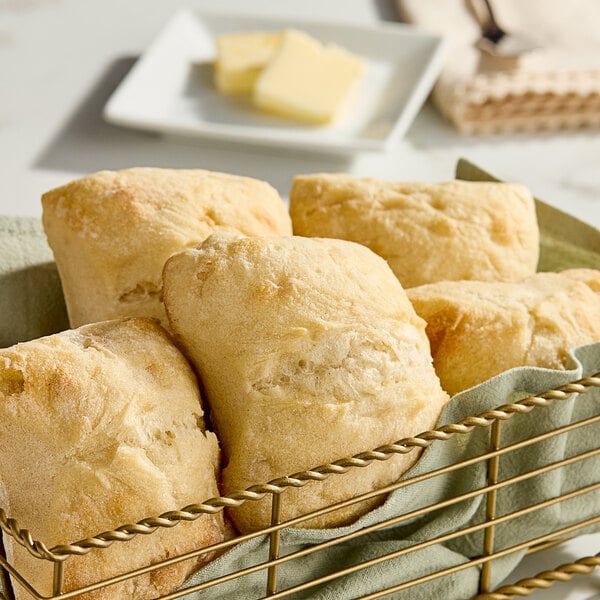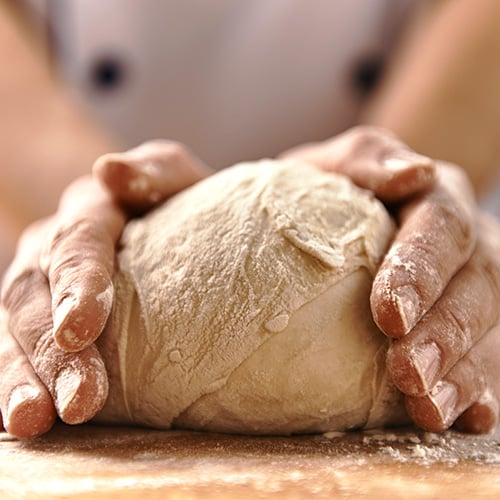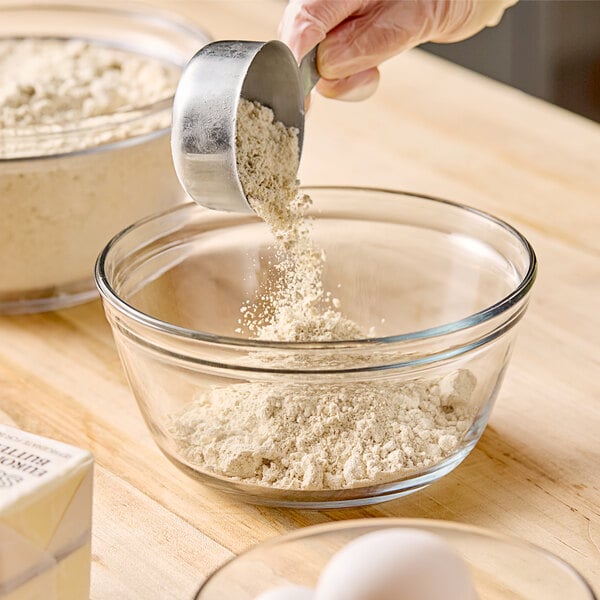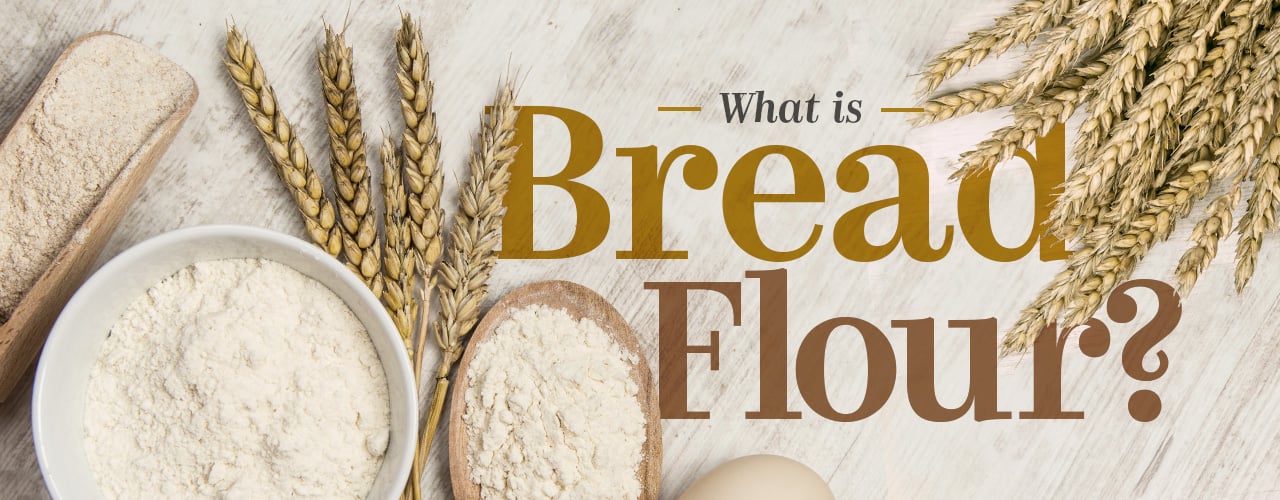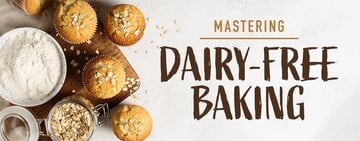With a history dating back centuries, pretzels have evolved into a multifunctional food found everywhere from concession stand menus to beer gardens. This beloved snack comes in a variety of shapes, sizes, and flavors, making it a versatile option for commercial food establishments. From classic twisted knots to innovative shapes and textures, we'll explore the diverse formats of modern pretzels.
Shop All Soft Pretzels
Click any of the links below to skip to a specific type of pretzel:
Traditional American Soft Pretzels
Bavarian Soft Pretzels
Pretzel Bites
Pretzel Braids
Stuffed Pretzels
Pretzel Buns
Pretzel Dogs
Soft Pretzel Sticks
Hard Pretzel Knots
Mini Pretzels
Hard Pretzel Sticks
Pretzel Rods
Pretzel Twists
Pretzel Crisps
Pretzel Rings
What Are Pretzels?
Pretzels are German baked bread products traditionally known for their unique twisted knot shape. Before baking, pretzels are often boiled or treated with an alkaline solution, such as baking soda or lye. The alkaline solution catalyzes the Maillard reaction, imbuing pretzels with their signature shiny dark brown hue, chewy texture, and rich flavor.
Soft vs Hard Pretzels
Pretzels can be grouped into two categories: soft and hard. Soft pretzels are a type of bread known for their chewy crust and doughy interior. They are typically made from a yeast-based dough that is boiled before baking, giving them a soft and tender bite. Soft pretzels can be shaped into various forms, such as twists, knots, or sticks, and topped with pretzel salt or other sweet and savory seasonings for added flavor. They are often served as a snack or appetizer in restaurants, bars, and food trucks.
Hard pretzels are characterized by their crunchy texture and crispy bite. These pretzels are made from a drier dough that is not boiled but rather baked at a high temperature. This creates a firm, brittle baked good with a cracker-like consistency. Hard pretzels are often shaped into classic knot or rod shapes and are commonly seasoned with salt or savory spice blends. Hard pretzels are a staple of snack mixes, concession stands, and vending machine businesses.
Types of Soft Pretzels
Soft pretzels are a popular snack choice that comes in various styles, including traditional pretzel knots, pretzel sticks, and pretzel bites. Learn more about the different types of soft pretzels below.
1. Traditional American Soft Pretzels
Known for their iconic knotted shape, traditional American soft pretzels have a slight chewiness but retain a doughier consistency than their Bavarian counterparts. Some vendors incorporate butter and sugar into their dough for a rich flavor profile. They are often seasoned with coarse salt, which adds a savory contrast to the dough's subtle sweetness.
While they're delicious plain, traditional soft pretzels are a beloved vessel for scooping up decadent nacho cheese sauce. Other vendors coat them in cinnamon sugar and serve them with Nutella as a sweet snack. They are commonly found in concession stands, sports venues, and theme parks, where they are served as a convenient and portable snack option. Soft pretzels are also popular on bar food menus, especially as a $5 happy hour promotional item.
Traditional American Soft Pretzel Shape: Knot
Traditional American Soft Pretzel Flavor: Yeasty, rich, slightly sweet
Traditional American Soft Pretzel Texture: Doughy, light-chew
Traditional American Soft Pretzel Toppings: Coarse salt, cinnamon sugar, nacho cheese, Nutella
2. Bavarian Soft Pretzels
The focus of Bavarian pretzels is the bready, malty flavor of the dough, which typically includes barley malt syrup or brown sugar. To make Bavarian pretzels, bakers use a pre-ferment stage and a lye bath with a sodium hydroxide solution before baking them. This process contributes to the pretzel's characteristic chewy exterior and dense, soft interior. The slightly tangy, alkaline taste from the lye dip contrasts and enhances the dough’s sweetness.
Bavarian pretzels are typically sprinkled with coarse salt, giving them a subtle crunch and enhancing their flavor. Other popular seasonings for Bavarian pretzels include sesame seeds, poppy seeds, garlic powder, and cinnamon sugar. They are often served with savory dips like mustard and beer cheese. They’re a beloved staple at beer gardens, gastro pubs, and Oktoberfest parties.
Bavarian Soft Pretzel Shape: Knot
Bavarian Soft Pretzel Flavor: Malty, tangy aftertaste
Bavarian Soft Pretzel Texture: Chewy crust, bready center
Bavarian Soft Pretzel Toppings: Coarse salt, beer cheese, mustard, sesame seeds
3. Pretzel Bites
Pretzel bites are a popular variation of traditional soft pretzels beloved for their bite-sized convenience. These snackable pretzels feature a soft and chewy interior encased in a slightly crispy exterior, providing a delightful contrast in texture that keeps customers coming back for more. They boast the same savory and slightly salty taste as their larger counterparts. They can also be coated with different flavors such as garlic, cinnamon sugar, or even jalapeno for a more adventurous twist.
Soft pretzel bites are perfect for appetizer menus, bar snacks, or even as a side dish to accompany sandwiches and salads. Their compact size makes them ideal for dipping into various sauces. Consider offering different seasoning and sauce combinations for customers to choose from when they order pretzel bites as an appetizer. You can upsell each sauce and seasoning to boost your profits.
Pretzel Bites Shape: Small, rectangular, or slightly rounded squares
Pretzel Bites Flavor: Slightly sweet, buttery, rich
Pretzel Bites Texture: Firm exterior, chewy and pillowy interior
Pretzel Bites Toppings: Garlic salt, fresh herbs, za'atar seasoning
4. Pretzel Braids
Originating from Pennsylvania Dutch cuisine, pretzel braids are a beloved variation of the classic soft pretzel. Known for their distinct flavor, PA Dutch pretzel braids boast a delicious combination of savory and slightly sweet notes. The dough is typically seasoned with a touch of malt syrup, giving these pretzels a unique taste that sets them apart from other varieties. They are often sprinkled with coarse salt, but some variations may also be topped with sesame seeds or poppy seeds for added texture and visual interest.
The shape of PA Dutch pretzel braids is one of their defining features. Instead of the traditional pretzel knot, these pretzels are expertly braided, creating an intricate pattern that adds visual appeal to the snack. The braiding technique also contributes to the pretzel's texture, resulting in a slightly denser and chewier consistency compared to other pretzel shapes. Pretzel braids create an alluring presentation on a continental breakfast spread.
Pretzel Braid Shape: Braided pretzel dough baked to golden brown perfection
Pretzel Braid Flavor: Malt syrup, yeasted dough
Pretzel Braid Texture: Chewy
Pretzel Braid Toppings: Coarse salt, sesame seeds, poppy seeds
5. Stuffed Pretzels
Stuffed pretzels offer a flavorful twist on the traditional soft pretzel by adding fillings to the dough. Popular fillings include cheddar cheese, jalapeno cream cheese, and mozzarella pepperoni, as well as more innovative options like spinach and feta, buffalo chicken, and bacon ranch. Sweet choices like dulce de leche or Nutella stuffed pretzels are perfect for dessert menus. Because they're filled, it's best to keep toppings simple.
Stuffed pretzels come in knot, stick, or bite shapes. Each stuffed pretzel shape offers a unique presentation and portion size. Pretzels are usually considered an appetizer or snack, but thanks to their hearty nature, some customers may enjoy a stuffed pretzel as their lunch entree.
Stuffed Pretzel Shape: Knot, stick, or bites
Stuffed Pretzel Flavor: Classic pretzel shell stuffed with savory, spicy, or sweet fillings like cheese, jalapeno, buffalo chicken, or Nutella
Stuffed Pretzel Texture: Firm crust encasing soft dough oozing with gooey fillings
Stuffed Pretzel Toppings: Coarse salt, sesame seeds
6. Pretzel Buns
Pretzel buns are made using a traditional pretzel dough recipe, giving them a distinct taste and texture that sets them apart from regular burger buns or sandwich rolls. Characterized by their chewy exterior and soft interior, the dough is typically boiled before baking, giving the buns their signature glossy finish.
Incorporating pretzel buns into your menu can help you stand out from the competition and attract customers seeking new and exciting culinary experiences. The combination of chewy and soft textures makes them a delightful choice for deli sandwiches, burgers, and pulled pork. Consider selling pretzel buns as an optional upgrade to increase your profits.
Pretzel Bun Shape: Round
Pretzel Bun Flavor: Malty, salty, subtly sweet
Pretzel Bun Texture: Dense and doughy because there is a higher pretzel interior-to-crust ratio
Pretzel Bun Fillings: Reuben sandwich, gourmet burger, pulled pork
7. Pretzel Dogs
Pretzel dogs are a delicious twist on the classic hot dog bun, combining the savory flavors of a hot dog with the salty, crunchy texture of a pretzel. Pretzel dogs come in two main variations: the hot dog bun-shaped pretzel dog and the cylindrical, hollow pretzel dog. The hot dog bun-shaped pretzel dog is similar in appearance to a traditional hot dog bun, but it's made from soft pretzel dough.
On the other hand, the cylindrical pretzel dog features a hollow center where a sausage can be inserted, allowing operators to choose their favorite types of sausages and create unique flavor combinations. Both types of pretzel dog buns offer a satisfying blend of flavors and textures. Whether served as a quick grab-and-go option or as a featured item on a menu, pretzel dogs are sure to be a hit with customers seeking a delicious twist on classic regional hot dogs.
Pretzel Dog Shape: Hot dog bun shaped or oblong with a hole through the center
Pretzel Dog Flavor: Classic soft pretzel flavor
Pretzel Dog Texture: Crustier than traditional soft pretzels, creating a denser chew
Pretzel Dog Fillings: Hot dogs, sausages (especially traditional German sausages like knockwurst)
8. Soft Pretzel Sticks
Soft pretzel sticks put a German twist on the Italian breadstick. Their elongated, oblong shape is more convenient for snacking, transporting to sports venues, and layering into bread baskets. They’re known for their savory flavor profile, with a slightly salty exterior and a soft, chewy interior.
In commercial settings, soft pretzel sticks are a versatile menu item that can be served as a standalone snack or as part of a larger meal. Consider serving them alongside soup and saucy entrees for dipping. Top them with coarse salt, sesame seeds, garlic, cheese, or herbs and spices.
Soft Pretzel Sticks Shape: Oblong
Soft Pretzel Sticks Flavor: Salty, malty, yeast
Soft Pretzel Sticks Texture: Doughy interior, firm crust
Soft Pretzel Sticks Toppings: Salt, sesame seeds, garlic, cheese, herbs, spices
Back to Top
Types of Hard Pretzels
Hard pretzels are beloved for their crunchy texture and savory flavor. These pretzels are typically made from a simple dough of flour, water, and yeast. Discover the different shapes, textures, and flavors of hard pretzel varieties.
1. Hard Pretzel Knots
Pretzel knots are the original and most popular variation of hard pretzels. They’re known for their classic salty and savory flavor, making them a versatile snack option for a wide range of commercial applications. The texture of hard pretzel knots is characterized by a satisfying crunchiness that comes from the baking process, which gives them a firm and crispy bite.
Hard pretzel knots are commonly served as a quick and convenient snack option in bars, restaurants, and concession stands. They can also be used as a garnish for soups and salads, adding a crunchy element and a touch of savory flavor to the dish. Additionally, hard pretzel knots can be crushed and used as a coating for chicken tenders or fish fillets to create a unique and flavorful crust.
Hard Pretzel Knot Shape: Three loops
Hard Pretzel Knot Flavor: Salty, slightly sweet, malt, buttery
Hard Pretzel Knot Texture: Crunchy
Hard Pretzel Knot Toppings: Pretzel salt, garlic salt, salt and vinegar, ranch, Cajun seasoning, chocolate-covered pretzels
2. Mini Pretzels
Mini pretzel knots are a bite-sized version of classic hard pretzel knots. They typically have a traditional pretzel flavor that combines a hint of saltiness with a subtle maltiness. These small pretzels are baked to perfection, resulting in a crisp and satisfying crunch.
Whether enjoyed on their own or paired with dips, cheeses, or spreads, mini pretzel knots are a versatile and delicious option for foodservice establishments. These bite-sized pretzels can also be incorporated into snack mixes, trail mixes, or charcuterie boards to add a crunchy element and enhance the overall flavor profile. Additionally, mini pretzel knots can be served as a side accompaniment to soups, salads, or sandwiches for a satisfying and flavorful crunch.
Mini Pretzel Shape: Knotted (smaller version of classic hard pretzel)
Mini Pretzel Flavor: Salty, subtle malt
Mini Pretzel Texture: Delicate crunch
Mini Pretzel Toppings: Salt, sesame seeds, garlic, cheese, herbs, spices
3. Hard Pretzel Sticks
Pretzel sticks typically feature a classic pretzel flavor, known for its toasty bread taste, enhanced by a subtle saltiness. These slender, rod-shaped snacks are known for their crisp texture. Their dense, compact form makes them a durable option for dipping into various condiments. They are an ideal choice for appetizer platters or snack bowls at catered events.
The shape of pretzel sticks, with their elongated and slender form, offers a convenient and portable snacking experience for customers on the go. Their shape also makes them easy to handle and serve, whether displayed in bulk containers for self-service or portioned into individual servings for grab-and-go offerings. You can even use them to make charcuterie skewers for a trendy and edible presentation.
Hard Pretzel Stick Shape: Thin stick
Hard Pretzel Stick Flavor: Salty, toasty
Hard Pretzel Stick Texture: Crunchy, firm
Hard Pretzel Stick Toppings: Use to skewer charcuterie meats and cheeses, use for dipping
4. Pretzel Rods
Pretzel rods are elongated pretzels known for their dense and crunchy texture, making them a versatile option for various commercial applications. Most pretzel rods have a rich, salty flavor. Their thickness provides a satisfying snap with every bite, making them a favorite amongst those who like crunchy snacks.
Due to their elongated shape, pretzel rods are ideal for dipping in various sauces, spreads, and toppings. They can be used as a standalone snack or incorporated into creative recipes to add a crunchy element. One popular application of pretzel rods is dipping them in melted chocolate to create delicious desserts such as chocolate-covered pretzel rods.
Pretzel Rod Shape: Thick log
Pretzel Rod Flavor: Heartier than other hard pretzels, providing more salty, malty, bready pretzel flavor
Pretzel Rod Texture: Dense, crunchy
Pretzel Rod Toppings: Dipped in melted chocolate and rolled in sweet toppings, savory dips, or spreads
5. Pretzel Twists
Pretzel twists combine the functionality of pretzel sticks with the visual appeal of pretzel knots. Bakers create pretzel twists by taking two pieces of hard pretzel stick dough and twisting them together before baking them. This process yields a distinctive, intertwined shape that is less prone to breakage than other hard pretzel varieties.
Whether served as a standalone snack in bars, restaurants, or entertainment venues, or used as a garnish for soups and salads in catering and foodservice operations, pretzel twists add a touch of fun and flavor to any menu. With their convenient size and shape, pretzel twists are also a popular choice for snack packs, vending machines, and concession stands. Their durability and long shelf life make them an ideal option for grab-and-go snacking, making them a favorite among busy customers looking for a quick and tasty treat.
Pretzel Twist Shape: Intertwined sticks
Pretzel Twist Flavor: Larger surface area offers more pretzel flavor, typically heavily spiced with various spice blends
Pretzel Twist Texture: Crunchy, toothsome
Pretzel Twist Toppings: Ranch, honey mustard, Cajun seasoning, cheese seasoning
6. Pretzel Crisps
Pretzel crisps, the crackers of the hard pretzel world, look like flattened hard pretzel knots. This shape not only contributes to the unique texture of these pretzels but also makes them easy to handle and enjoy. Their wafer-like consistency and large surface area help customers scoop up your signature dips without overpowering them.
These thinner, flattened pretzels allow for a lighter and crispier mouthfeel than their thicker counterparts. Their flat surface also allows you to coat them in a variety of seasonings. Pretzel crisps can add a crunchy element to charcuterie boards, appetizer platters, or school lunch boxes.
Pretzel Crisp Shape: Knotted, flat, thin
Pretzel Crisp Flavor: Bready, takes on the taste of its seasonings
Pretzel Crisp Texture: Crispy
Pretzel Crisp Toppings: Pretzel salt, cheese seasoning, garlic salt, Tajin, Cajun seasoning
7. Pretzel Rings
Pretzel rings are characterized by their circular shape with a hole in the center, resembling a bagel or donut. This distinctive shape not only adds visual appeal but also affects the overall texture. The ring shape creates a more uniform distribution of the dough, resulting in a consistent crunchiness throughout the snack.
In commercial settings, pretzel rings can be used in snack mixes, appetizer platters, or as a garnish for salads or soups. Their wide surface area makes them an excellent vessel for enjoying dips like hummus. They are an eye-catching offering at catered events.
Pretzel Ring Shape: Flattened bagel
Pretzel Ring Flavor: Salty, malty, doughy
Pretzel Ring Texture: Crispy, light
Pretzel Ring Toppings: Pretzel salt, seasonings, excellent vessel for dips
Back to Top
Pretzel FAQ
Pretzels are a delightful snack that comes in many forms. We answer a few common questions about pretzels below so that you can invest in the best types of pretzels for your establishment.
Are Pretzels Healthy?
Pretzels are a good source of carbohydrates, providing quick energy, making them a popular choice for on-the-go snacking. However, due to their processing, pretzels may lack significant nutritional value compared to whole-grain options. While they are low in fat and cholesterol, one must be mindful of their high sodium content. It is recommended to consume pretzels in moderation as part of a balanced diet.
Are Pretzels Gluten Free?
Traditional pretzels are typically made from a combination of wheat flour, water, yeast, sugar, and salt. As wheat flour contains gluten, it is safe to say that most conventional pretzels are not gluten-free. However, with the growing demand for gluten-free products, manufacturers have developed alternative recipes to cater to those with gluten sensitivities.
Gluten-free pretzels are made using alternative flours such as rice flour, corn flour, or a blend of gluten-free grains. These ingredients provide a similar texture and taste to traditional pretzels while ensuring they are safe for individuals with gluten intolerance to consume.
Where Are Pretzels From?
Many believe German monks created pretzels in the early Middle Ages and used their twisted-knot shape to represent the Holy Trinity, with the three holes in the pretzel symbolizing the Father, the Son, and the Holy Spirit. Another theory suggests that pretzels originated in Southern Germany as a form of "pretiola," a type of Roman unleavened bread that was twisted and seasoned with salt. Over time, this simple bread evolved into the pretzel that we know and love today. Whether they were created by monks in the Middle Ages or inspired by ancient Roman bread, the storied history of pretzels adds to their appeal.
From classic bar snacks to artisanal pretzel creations, the diverse range of pretzel varieties offers something for nearly every occasion. By understanding the characteristics and uses of different types of pretzels, you can make informed decisions on which fit with your business model and menu.
